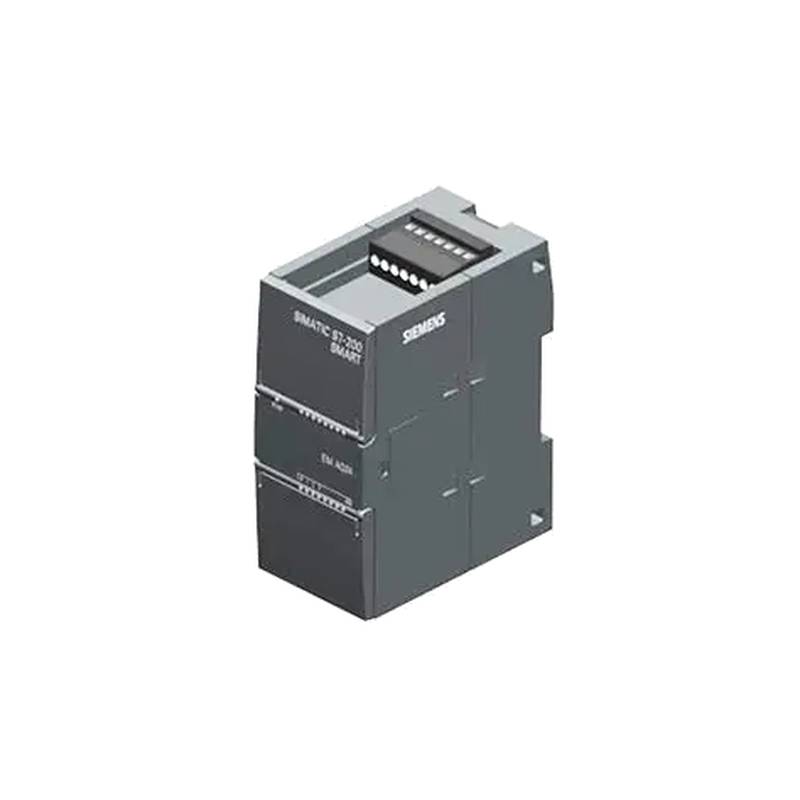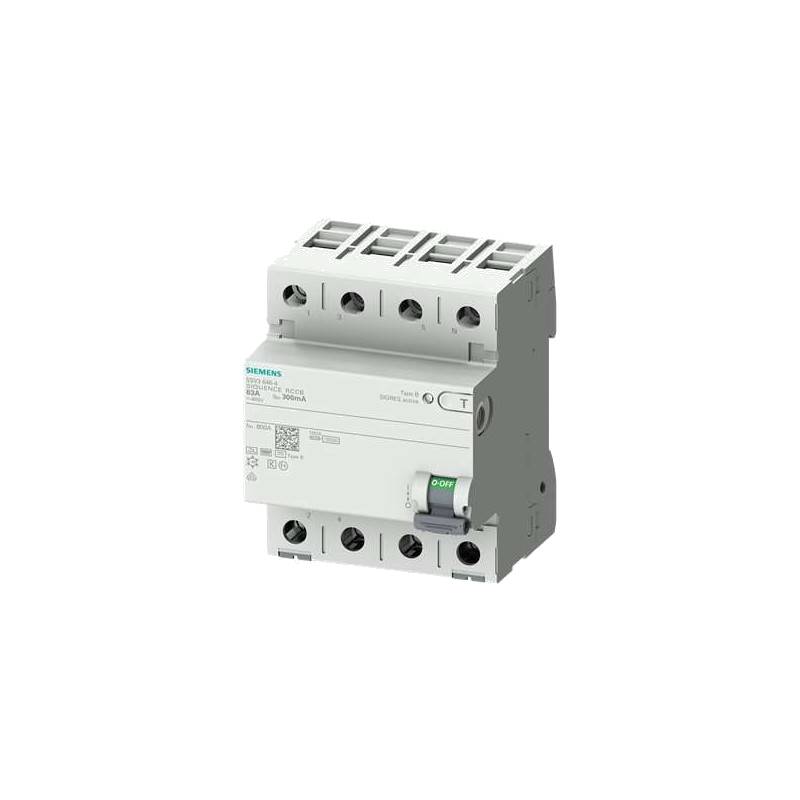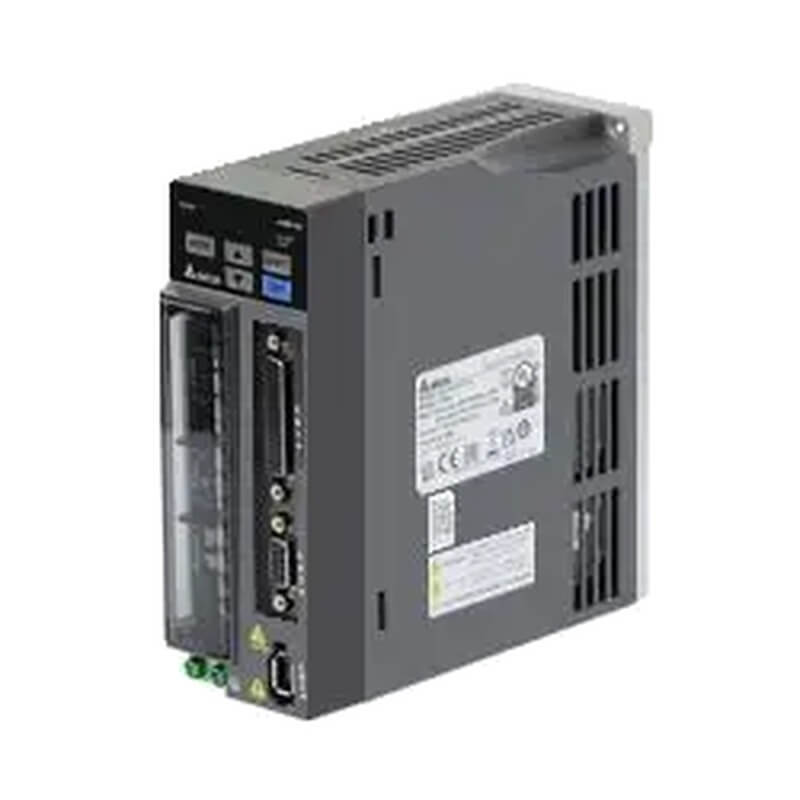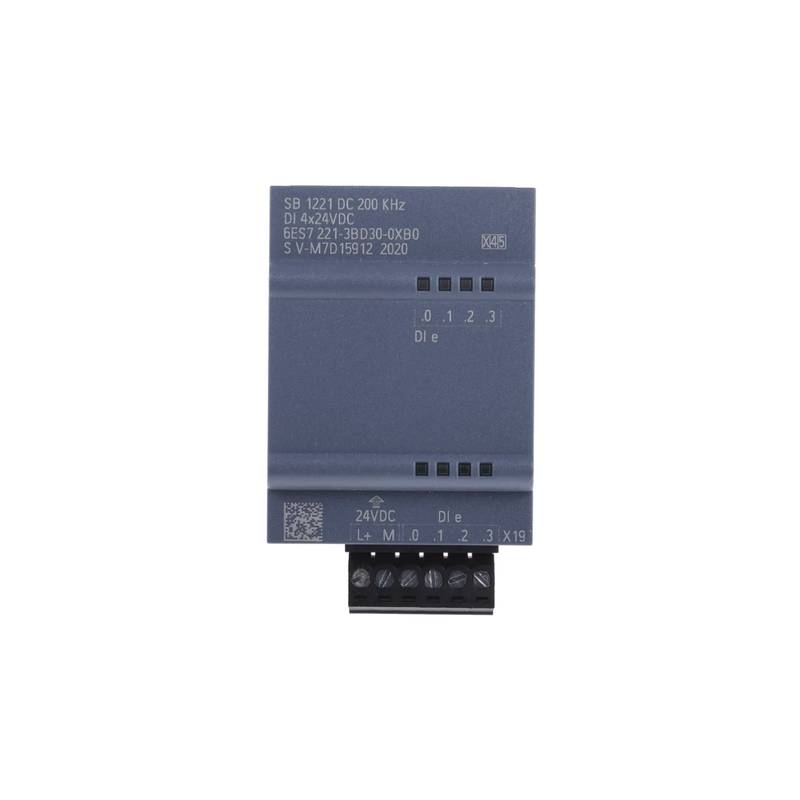
The SIEMENS 6ES7288-3AQ04-0AA0 stands as a pivotal 4-channel analog input module, engineered for robust temperature monitoring within industrial automation systems. Its design emphasizes high precision, rapid response times, and seamless integration into Siemens' SIMATIC S7-1200 platform, making it an ideal choice for demanding process control applications. With features such as thermocouple and RTD compatibility, direct diagnostics, and a compact form factor, this module offers significant advantages in terms of accuracy, efficiency, and system flexibility. Key technical parameters include a voltage range of -10 to +10 V, a current range of -20 to +20 mA, and support for various temperature sensor types, ensuring versatile deployment across diverse industrial environments.
Product Specifications
| Feature | Specification |
| :------------------ | :----------------------------------------------- |
| Product Type | Analog Input Module |
| Channels | 4 |
| Input Type | Voltage, Current, Thermocouple, RTD |
| Voltage Range | -10 to +10 V |
| Current Range | -20 to +20 mA |
| Resolution | 14 bits |
| Conversion Time | 75 µs per channel |
| Diagnostic Functions| Integrated |
| Communication | SIMATIC S7-1200 |
| Power Consumption | 0.75 W |
| Operating Temperature| -20 to +60 °C |
| Dimensions (W x H x D)| 45 mm x 100 mm x 75 mm |
Core Features & Market Positioning
The SIEMENS 6ES7288-3AQ04-0AA0 distinguishes itself through its multi-sensor input capability, accommodating thermocouples (Type J, K, T, E, S, R, B, N) and RTDs (Pt100, Pt1000, Ni100, Ni1000) within a single module. This versatility reduces the need for specialized input cards, simplifying inventory and system design. Its direct diagnostics feature provides immediate alerts for sensor breakages or short circuits, enabling proactive maintenance and minimizing downtime. Positioned as a high-performance, cost-effective solution for precise temperature measurement, it integrates seamlessly with the widely adopted SIMATIC S7-1200 PLC family, offering a powerful and cohesive automation architecture. The module's high accuracy and fast response times are critical for applications requiring tight temperature control, setting it apart from lower-tier alternatives.
Key Application Scenarios
This analog input module is ideally suited for a broad spectrum of temperature monitoring applications across various industries. In the chemical and petrochemical sectors, it ensures precise temperature control in reactors and distillation columns, crucial for product quality and process safety. The food and beverage industry benefits from its accuracy in monitoring pasteurization, sterilization, and cold storage processes. For the pharmaceutical sector, maintaining strict temperature ranges during production and storage is paramount, a requirement met by the 6ES7288-3AQ04-0AA0's reliable performance. Furthermore, it finds application in building automation for HVAC systems, in the automotive industry for process monitoring, and in general manufacturing for quality control and equipment health monitoring.
Practical System Integration Guidance
Integrating the SIEMENS 6ES7288-3AQ04-0AA0 into a SIMATIC S7-1200 system is streamlined through the TIA Portal software. Wiring involves connecting the temperature sensors directly to the module's terminals, adhering to the specific wiring diagrams for thermocouple or RTD configurations as outlined in the product manual. For example, a 3-wire RTD connection requires careful attention to lead wire resistance compensation. Once physically installed and wired, the module is configured within the TIA Portal's hardware configuration. Device description files (GSDML) facilitate its recognition and integration into the project. Programming involves reading the analog input values from the module's data blocks, which are then scaled and processed within the PLC's logic for control or visualization purposes.
Operation and Risk Mitigation
Proper operation of the SIEMENS 6ES7288-3AQ04-0AA0 relies on accurate configuration and adherence to environmental specifications. Users should ensure that the chosen sensor type and measurement range within the TIA Portal precisely match the connected device. Over-voltage protection is inherent, but avoiding external power surges is critical. Potential issues include incorrect wiring, which can lead to inaccurate readings or no signal. Faults are typically indicated by diagnostic LEDs on the module and accessible through the PLC's diagnostic buffer. Common error codes relate to sensor wire breaks or short circuits, prompting checks of the sensor and its connections. Ensuring proper grounding and shielding of sensor cables can mitigate electromagnetic interference, which is crucial for maintaining signal integrity.
Scalability & Long-Term Value
The SIEMENS 6ES7288-3AQ04-0AA0 offers excellent scalability and long-term value due to its integration within the comprehensive SIMATIC ecosystem. As temperature monitoring needs expand, additional analog input modules or other I/O modules from the S7-1200 series can be seamlessly added to the existing controller, allowing for system growth without requiring a complete overhaul. Its compatibility with various Siemens software versions ensures ongoing support and access to updates. The module's robust construction and Siemens' reputation for reliability contribute to a long operational lifespan. Furthermore, its support for standard industrial communication protocols facilitates integration with higher-level systems, including SCADA and IIoT platforms, enabling advanced data analytics and predictive maintenance strategies.
Frequently Asked Questions
Q1: What temperature sensors can be connected to the SIEMENS 6ES7288-3AQ04-0AA0?
The SIEMENS 6ES7288-3AQ04-0AA0 is highly versatile. It supports a wide array of common industrial temperature sensors, ensuring broad compatibility across many applications. This includes various types of thermocouples and resistance temperature detectors.
Specifically, it accommodates popular thermocouple types like J, K, T, and E, along with higher-temperature types such as S, R, B, and N. For resistance thermometers, it reliably interfaces with Pt100, Pt1000, Ni100, and Ni1000 sensors.
This extensive sensor support simplifies system design, reducing the need for external signal converters or multiple specialized modules for different temperature sensing technologies.
Q2: How do I configure the SIEMENS 6ES7288-3AQ04-0AA0 for RTD measurements?
Configuring the module for RTD measurements is performed within the TIA Portal software. You'll select the RTD type (e.g., Pt100) and the appropriate wiring mode (2, 3, or 4-wire) in the hardware configuration. Ensure the correct number of wires is selected to match your sensor's configuration for accurate readings.
Pay close attention to the wiring diagrams provided in the product manual for your specific RTD type and chosen wiring configuration. Proper connection of lead wires is crucial, especially for 3-wire and 4-wire setups where lead resistance compensation is essential for accuracy.
Once configured in TIA Portal, the PLC program will read scaled temperature values directly from the module's I/O addresses. Compensation for lead wire resistance is typically handled automatically by the module based on the selected wiring mode.
Q3: What are the benefits of the integrated diagnostic functions of this module?
The integrated diagnostic functions provide real-time status monitoring of the analog input channels. This capability allows for the early detection of potential issues, such as sensor wire breaks or short circuits. By identifying problems proactively, you can prevent unexpected process interruptions and minimize costly downtime.
These diagnostics are accessible through the PLC's diagnostic buffer and can trigger alarms or specific error codes within the automation system. This facilitates rapid troubleshooting, as the system can pinpoint the exact nature and location of the fault.
Ultimately, these features enhance system reliability and maintainability, ensuring that temperature monitoring remains accurate and that potential failures are addressed before they impact production or safety.
Q4: How does the SIEMENS 6ES7288-3AQ04-0AA0 integrate with the SIMATIC S7-1200 platform?
The SIEMENS 6ES7288-3AQ04-0AA0 is designed exclusively for the SIMATIC S7-1200 PLC family. Integration is achieved through the TIA Portal engineering software, where the module is added to the S7-1200's hardware configuration. This ensures seamless recognition and communication between the controller and the analog input module.
Device description files (GSDML) are utilized within TIA Portal to properly identify the module and its capabilities, enabling efficient configuration of its parameters and I/O mapping. The module then appears as a native component within the S7-1200 system.
Once integrated, the PLC program can directly access the analog input data from the module's data blocks, allowing for easy incorporation of temperature readings into control logic, data logging, and HMI displays.
Q5: What is the resolution and conversion time of the 6ES7288-3AQ04-0AA0, and why are they important?
This analog input module offers a resolution of 14 bits, meaning it can distinguish between 16,384 discrete levels within its input range. The conversion time is a rapid 75 microseconds per channel. These specifications are critical for applications requiring precise temperature measurements and fast response to process changes.
A higher resolution ensures that subtle variations in temperature are accurately captured, which is vital for maintaining tight control loops and ensuring product quality. The fast conversion time allows the PLC to receive updated temperature data quickly.
This combination of high resolution and fast conversion is essential for dynamic temperature processes where rapid adjustments are needed to prevent overshooting or undershooting setpoints, thereby optimizing efficiency and safety.
Q6: Can this module be used for voltage and current inputs, or only temperature sensors?
The SIEMENS 6ES7288-3AQ04-0AA0 is a multi-functional analog input module. While it excels at temperature monitoring using thermocouples and RTDs, it also supports direct voltage and current measurements. This dual capability enhances its versatility and cost-effectiveness in industrial settings.
It can accept inputs in the range of -10 to +10 V for voltage signals and -20 to +20 mA for current signals. This allows it to be used for monitoring other process variables that are transmitted as standard voltage or current signals.
Therefore, a single module can consolidate the measurement of temperature alongside other process parameters like pressure, flow, or level, simplifying wiring and reducing hardware requirements.
Q7: What are the typical troubleshooting steps for a "no signal" issue with this module?
When experiencing a "no signal" issue, the first step is to verify the physical wiring connections between the temperature sensor and the module's terminals. Ensure that all wires are securely fastened and correctly connected according to the module's documentation for the specific sensor type and wiring configuration.
Next, check the sensor itself for faults. Many temperature sensors can be tested independently of the module. Also, confirm that the sensor is functioning within its expected operating range and is properly powered if it's an active sensor.
Finally, review the configuration within the TIA Portal. Ensure the correct sensor type, measurement range, and wiring mode have been selected in the hardware configuration and that the corresponding software logic is correctly reading the module's input data.
Q8: How does the module handle electromagnetic interference (EMI)?
The SIEMENS 6ES7288-3AQ04-0AA0 is designed with robust shielding and filtering to minimize susceptibility to electromagnetic interference, common in industrial environments. However, proper installation practices are crucial for optimal performance. Always use shielded sensor cables and ensure they are routed away from high-power electrical sources or variable frequency drives.
Proper grounding is also a critical factor in mitigating EMI. Ensure that the module and the shield of the sensor cables are correctly grounded according to the installation guidelines provided by Siemens. A common ground reference for the PLC, module, and sensors can significantly improve signal integrity.
Implementing these measures helps maintain the accuracy and reliability of the temperature measurements, preventing false readings or signal degradation that could occur in the presence of strong electromagnetic fields.
Q9: Is this module compatible with older Siemens PLC systems or only S7-1200?
The SIEMENS 6ES7288-3AQ04-0AA0 is specifically designed and optimized for the SIMATIC S7-1200 controller family. Its integration, configuration, and communication protocols are tailored for this platform. Therefore, it is not directly compatible with older Siemens PLC systems, such as the S7-200, S7-300, or S7-400, without significant system redesign or interface modules.
For systems utilizing older Siemens PLCs, alternative analog input modules designed for those specific platforms would be required. Siemens offers a wide range of I/O modules across its various automation product lines to accommodate different system generations and requirements.
When upgrading or expanding, it's essential to verify module compatibility with the target PLC controller to ensure seamless integration and functionality.
Q10: What is the expected operational lifespan and maintenance requirements for this module?
Siemens industrial components, including the 6ES7288-3AQ04-0AA0, are engineered for high reliability and long operational lifespans, typically many years under normal operating conditions. The module has no user-serviceable internal parts, meaning its maintenance requirements are minimal.
Primary maintenance involves periodic checks of wiring integrity, ensuring connections remain secure and free from corrosion. Keeping the module's environment clean and within its specified operating temperature range is also crucial for longevity. Regular checks of diagnostic logs within the PLC can help identify any developing issues early.
Proactive monitoring via the module's diagnostic features and adhering to environmental specifications are the key factors in maximizing its operational lifespan and ensuring consistent performance without the need for frequent component replacement.

























